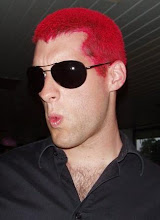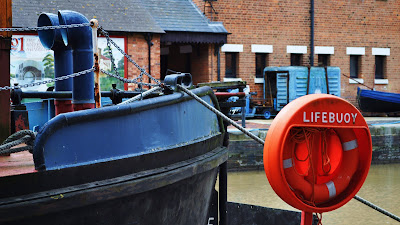Exercise: Panning with different shutter speeds12 photographs
I cannot believe that I ended up missing the
Motor GP - what a perfect subject for this exercise!
Damn! Right, I've got x4 ideas for this exercise; my mate "General" Patton is a big runner and is doing sprint training this weekend; there's a basketball match on Sunday if I can get to it; there's camel racing on in town, again, if I can get to it; if all else fails I can get one of the lads to drive the car back and forth for a bit.
***UPDATE***
Click here to view album
Many thanks to General for coming through and helping out with this exercise, we got some pretty fun snaps together. Now, I have to admit that a little bit of doctoring took place on these; I've cropped them to a 16:9 frame to cut out some of the open background and to frame General's movement better (I've also blurred out some number-plates, just in case). Also, it was a really hazy day so I reduced the noise using an editing program to improve the image quality a little. Have to say, for my first attempt at panning I'm really happy with the results! I'd love have another go at this at a motor race.
I asked General to do some sprints against the parked cars and the rocky mound in the background. Originally we were planning to do this exercise down at the track but the scenery is pretty bare so we opted for this so that there were more details in the background to review the results. I used the same S mode as the last exercise to allow the camera to decide the aperture for the selected shutter speed.
#01 1/4000 secIn this first image with the shutter speed set at maximum, General’s movements have been frozen and the background details are crisp. It’s a good action shot but doesn’t really have much presence to it.
#02 1/2500 secSlower the shutter speed down to 1/2500 sec, there’s little difference in results for the second pic compared to the first.
#03 1/1600 sec Still little difference from the first x2 photographs.
#04 1/800 secOnto the forth photo and the shutter down to 1/800 sec, the background is starting to un-focus just a little. This is a nice action shot of General and he’s starting to stand out against the car in the background.
#05 1/400 secAs with the previous photo, General’s movements have been frozen and the background is slightly out-of-focus.
#06 1/160 secAgain, General is standing out against the background as the shutter speed gets slower. I really prefer this photo over the first few as it’s beginning to give a sense of speed rather than a freeze-frame of the action.
#07 1/60 secThis is my favourite picture of the series. Down to 1/60 sec, the motion blur on the background really shows how much pace General has picked up. Also, at his extremities, where the motion is greatest, the detail is starting to show motion blur giving the scene a lot more character; it gives a greater sense of movement than a simple freeze-frame of the sprint.
#08 1/30 secThere’s much more motion blur in this frame and it seems to radiate around General; there’s no mistaking that he’s the subject focus in this photograph. At 1/30 sec, the motion of his arms and legs gives a greater impression of speed as he powers down the road (x8 rapid sprints down and General is showing no signs of fatigue!)
#09 1/13 secThe degree of motion blur at 1/13 sec has completely distorted General’s arms and legs and the streaking in the background seems to have widened the cars. I like this photograph as it is quite abstract but I have my doubts as to how successful it would have been without that orange shirt!
#10 1/8 secLots of motion blur in this frame and General’s arms a legs remind me a little of how a cartoonist might portray movement in a given frame. Also, the background detail is starting to blend into itself.
#11 1/3 secHere the background has streaked into one continuous feature as the car stretches from one end to the other. I really like the effect this has produced as it makes the frame look a lot ‘faster’. Also, there is enough detail on General’s extremities to make out his basic shape and gives an abstract sense of speed even though he’s completely out-of-focus.
#12 1/1.3 secOh dear, it would seem General has just broken the sound barrier…
In conclusion, I really enjoyed this exercise as there were some really striking results. Despite the fact that the atmospherics didn’t not allow for high quality photographs, I feel that the intent of this exercise was met. I prefer the results from the ‘middle-ground’ of the shutter speeds, 1/60 sec, as there was just enough motion blur to give a sense of movement without losing detail and giving the scene greater feeling than a simple freeze-frame. Looks like I’ll be using panning a lot more often! Please
click here to view the whole album.

 I recently utalised the higher sensity when taking some photos of a friend's newborn: she's only a month old and wouldn't stay still! ISO 800 and the fastest shutter speed the wide aperture would allow produced good results, but beyond that the noise was just too much. I also used it to good effect on the Paris Metro when a busker came onboard - ISO 1250 allowed me to get the shutter speed to 1/30 for a good exposure and it resulted in this gem of a photo!
I recently utalised the higher sensity when taking some photos of a friend's newborn: she's only a month old and wouldn't stay still! ISO 800 and the fastest shutter speed the wide aperture would allow produced good results, but beyond that the noise was just too much. I also used it to good effect on the Paris Metro when a busker came onboard - ISO 1250 allowed me to get the shutter speed to 1/30 for a good exposure and it resulted in this gem of a photo!





















.JPG)


























